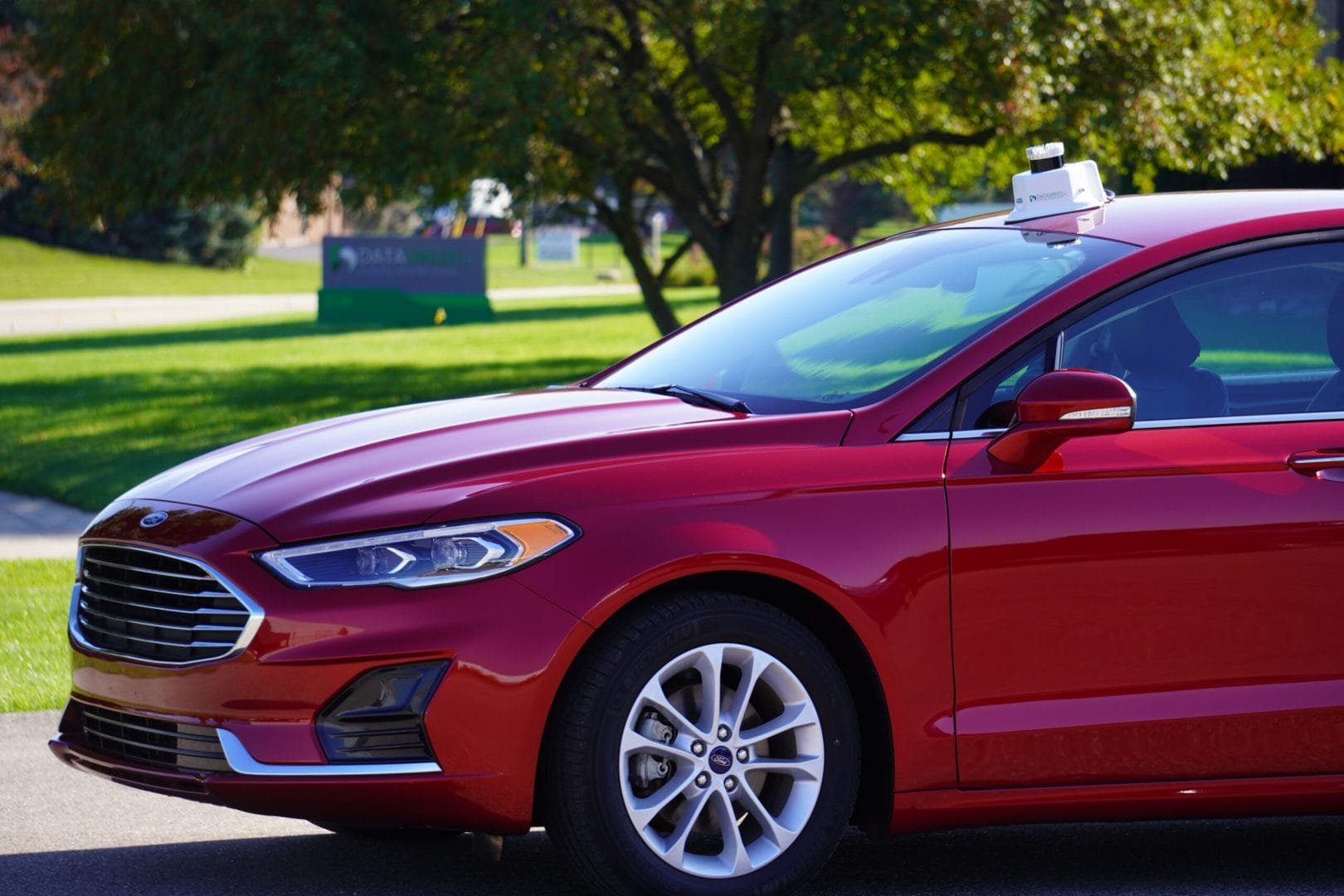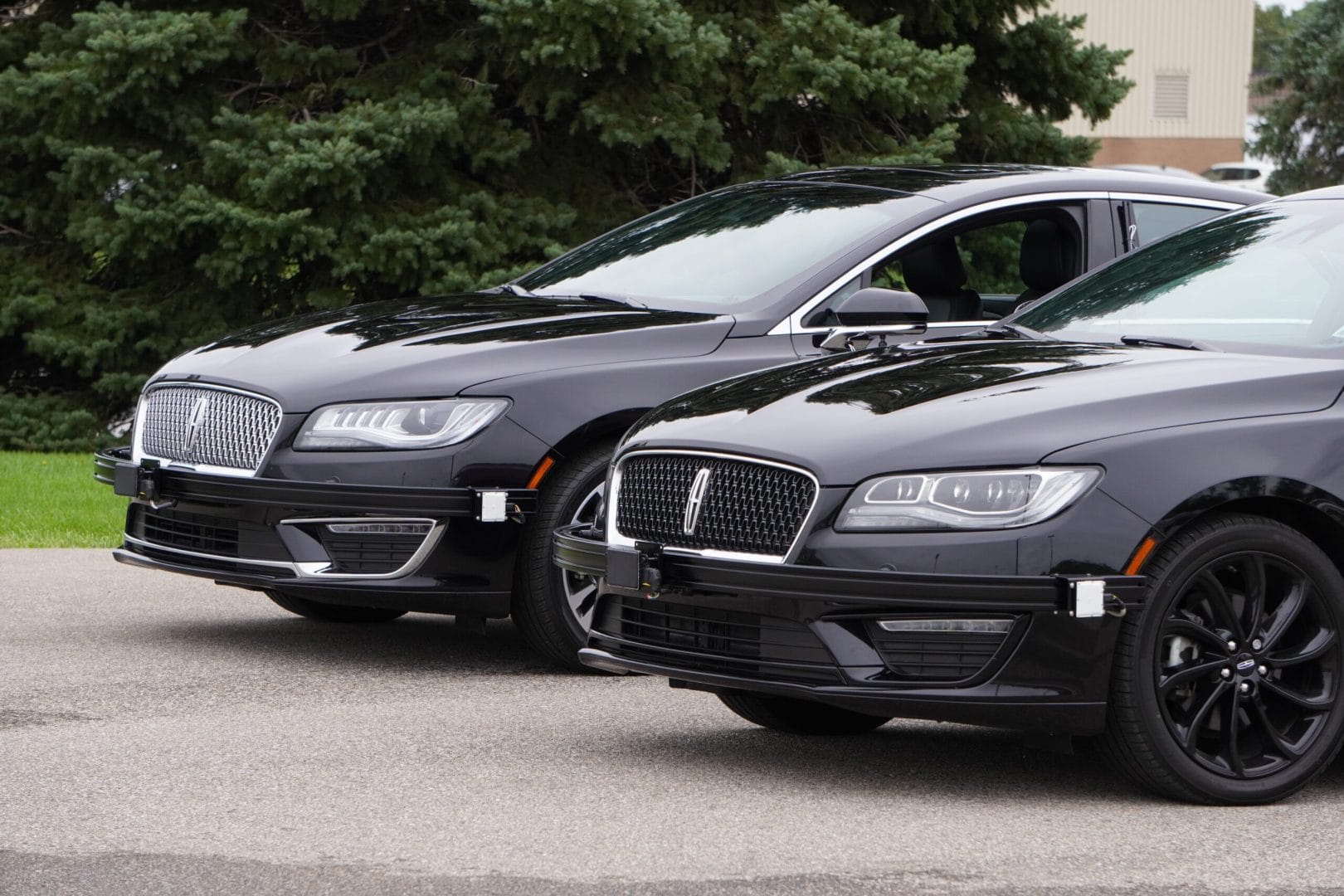Dataspeed Kinetic Kits have arrived to save teams time and effort in their autonomous vehicle integration process. They integrate top-of-the-line autonomous vehicle sensors, such as Ouster’s digital lidar, to streamline the AV hardware and software selection process. With these kits, teams can now focus their efforts on research and testing instead of calibration and troubleshooting. Every component was hand-selected by the experienced Dataspeed engineering team based on extensive industry knowledge and experience. Kinetic Kits are available in three packages:
- Starter
The Kinetic Starter Kit features a 32 channel Ouster lidar sensor and outfits production vehicles with the fundamental technologies to begin collecting data and developing essential autonomous functionality. It’s ideal for universities and startup teams just beginning research and testing.
- Intermediate
The Kinetic Intermediate Kit includes the basic sensor suite and adds on basic detection and automatic braking capabilities. This kit includes a retrofit of production vehicles with a sensor suite, also including an Ouster OS1-32, to successfully record and playback a manually driven route or to follow waypoint inputs. Additionally, it has the capability to detect and stop for objects. It’s ideal for teams looking to test within predetermined areas or for performing technology demonstrations.
- Advanced
The Kinetic Advanced Kit features two OS1-32s and one OS1-64. This kit provides out-of-the-box automated highway driving functionality including Lane Keeping Assist, Adaptive Cruise Control, and Automated Lane Change. This package is utilized with a full suite of sensors to allow engineering teams to build upon their autonomous research and testing.
What is an Ouster digital lidar?
Ouster’s digital lidar sensors provide high-resolution 3D spatial imaging that enables computers to better perceive the physical world. Ouster’s sensors are a critical component for autonomous systems in automotive, industrial, and robotic systems. We chose these sensors to power the spatial intelligence of our Kinetic package because of their simple design, rugged reliability, and high performance.
Resolution matters more than range.
Range is typically one of the most critical metrics for evaluating the performance of lidar sensors. Historically, the majority of lidar sensors used for object detection and mapping have been single channel 2D sensors. As a result, range has evolved to describe the maximum distance at which a lidar sensor can return a single point from a single channel, or 2D plane. While this range metric can help customers understand the maximum range at which a sensor can return points, it falls short when high resolution 3D lidar is needed for perception and localization.
One of the main advantages to using 3D lidar versus single channel 2D, is the ability to not only detect, but also classify the object that is being detected. In situations like this, range information must be combined with resolution to accurately assess the sensors’ real-world performance. Since perception systems need to be able to accurately identify the objects they are detecting, the range at which you can receive enough points from an object to classify the object, is more important than the max range of a single point, from a single channel. This is what we refer to as effective range.
In the example below, effective range is the distance at which a sensor can reliably detect a pedestrian. While the ability to detect a pedestrian can vary some based on the algorithm being used, a simple rule can standardize the metric. Based on feedback from our software partners, Ouster defines reliable detection as being able to place four horizontal lines of points on a 6 ft (1.8 m) tall pedestrian. For some flash sensors, the effective range will be limited by the range of their lasers, but for many high-resolution sensors, all analog and digital spinning sensors, effective range will be limited by resolution instead of range.

High resolution increases a sensor’s effective range. These OS1 lidar sensors all have the same
maximum range, but their effective range is determined by their resolution.
In the image above, you can visually see the difference in effective range between Ouster’s OS1 lidar sensors. While the absolute range of the OS1-32, OS1-64, and OS1-128 is the same, the effective range of the sensors is governed by the resolution differences among the three sensors. The OS1-32’s resolution produces an Effective Range of 20 m, compared to the OS1-64’s effective range of 40 m.
When deciding which Dataspeed Kinetic Kit is right for your application, effective range is critical. While the basic kit might fit most applications, if you require object detection at higher speeds, the greater effective range provided by the high-resolution advanced kit may be the better fit. You can also speak with a Dataspeed representative to discuss a custom package to upgrade the Ouster lidars in the basic and intermediate kits to a higher resolution model.
A partnership to advance the industry
Dataspeed and Ouster are very excited to partner and bring these kits to the market. We can’t wait to see what the industry is able to accomplish by leveraging this new technology. Request a quote for a Dataspeed Kinetic Kit today!
Share
Explore More

AI Test Vehicle for NIST
Project Overview Primary objective: The project goal for National Institute of Standard and Technology (NIST) is to provide measurement methods and metrics to study the interaction

Modular Camera Suite Integration for AI Leader
Project Overview Primary objective: A leader in AI reached out to Dataspeed with the intention of creating a small fleet of autonomous capable customer demonstration

McMaster’s Innovative Use of Dataspeed iPDS in EcoCAR EV Challenge
Dataspeed is a Supporter level sponsor of the EcoCAR EV Challenge and has donated an intelligent Power Distribution System (iPDS) to each team. The McMaster

